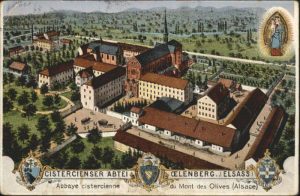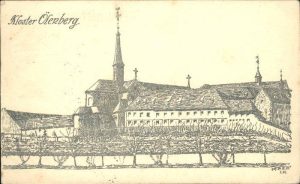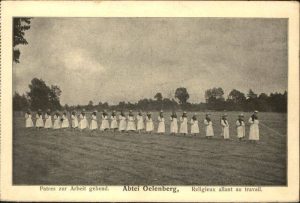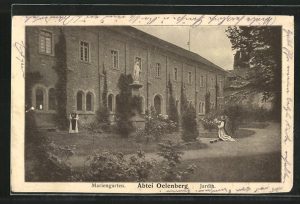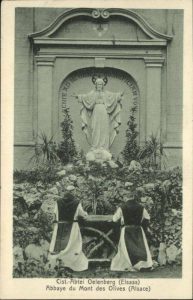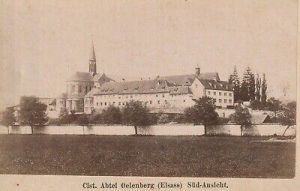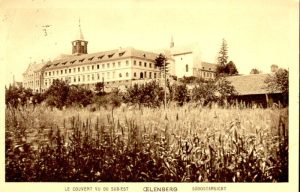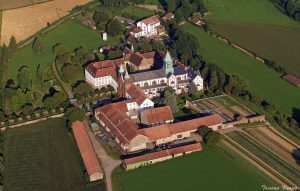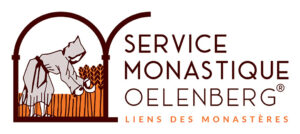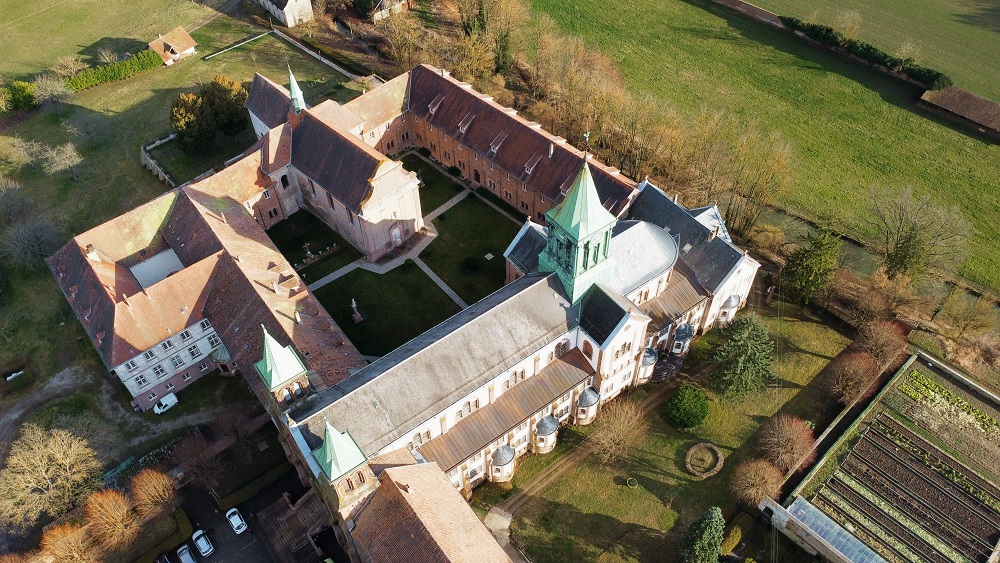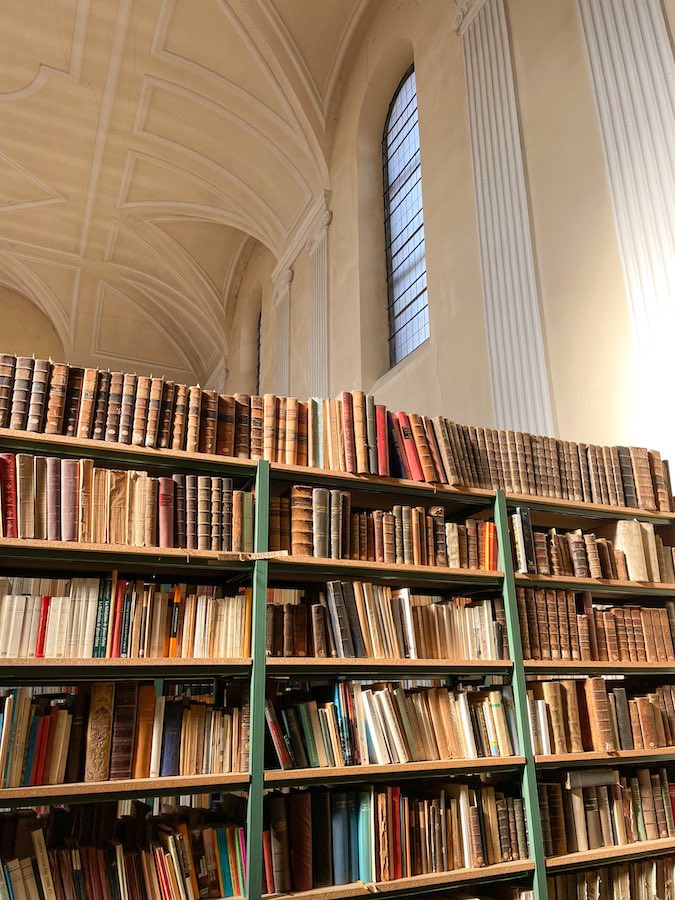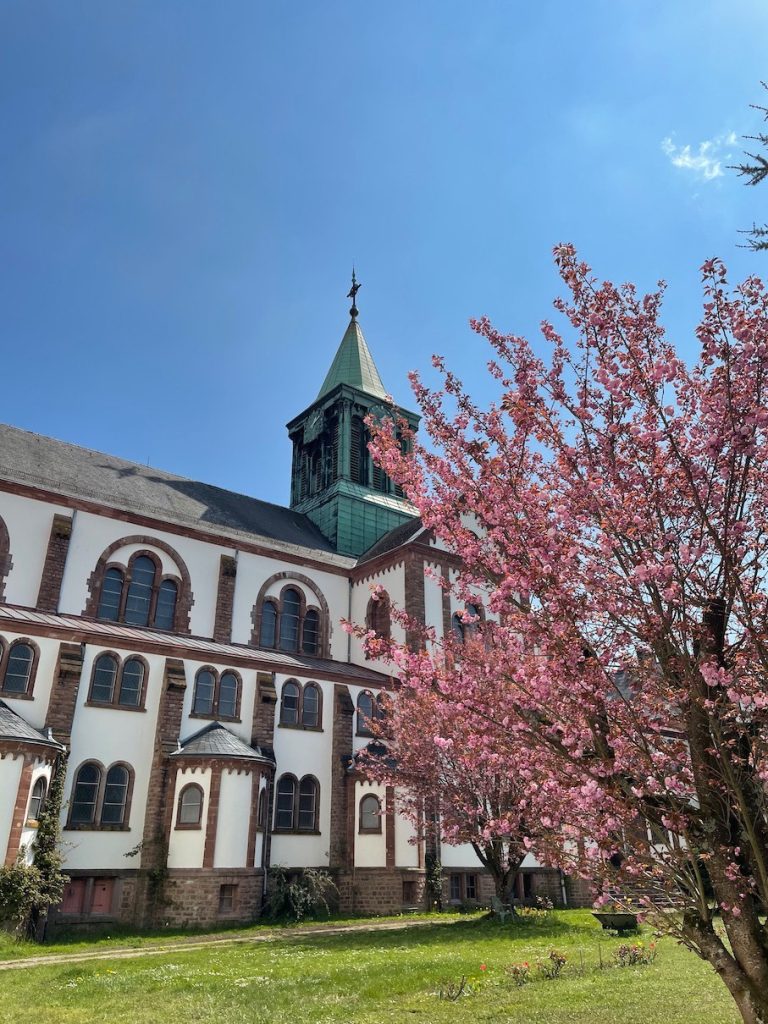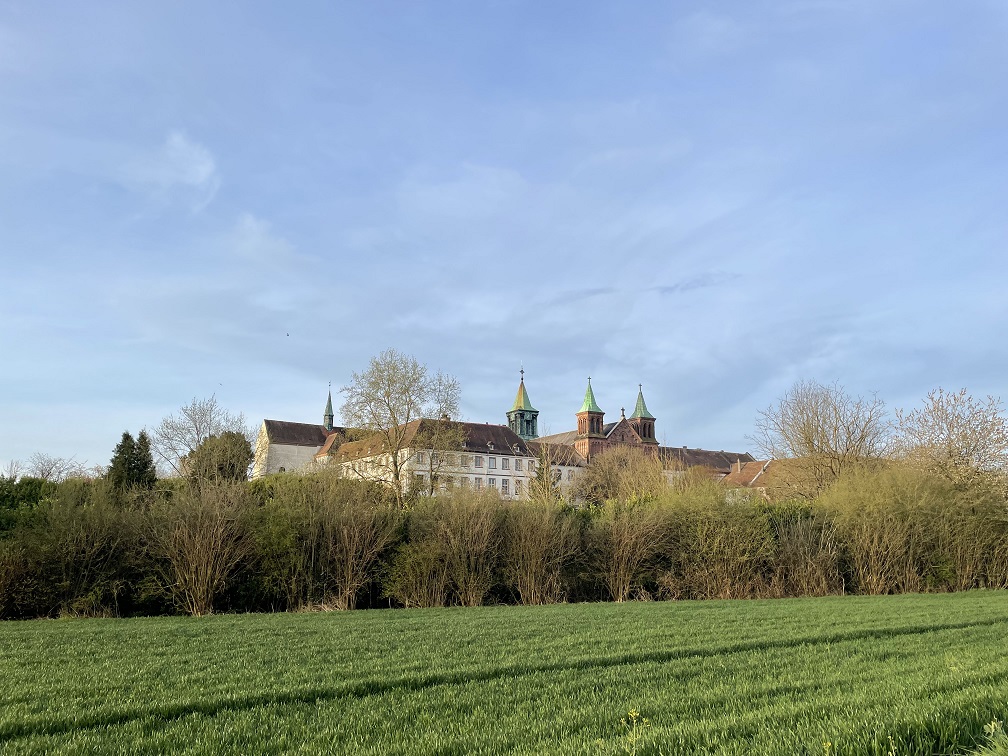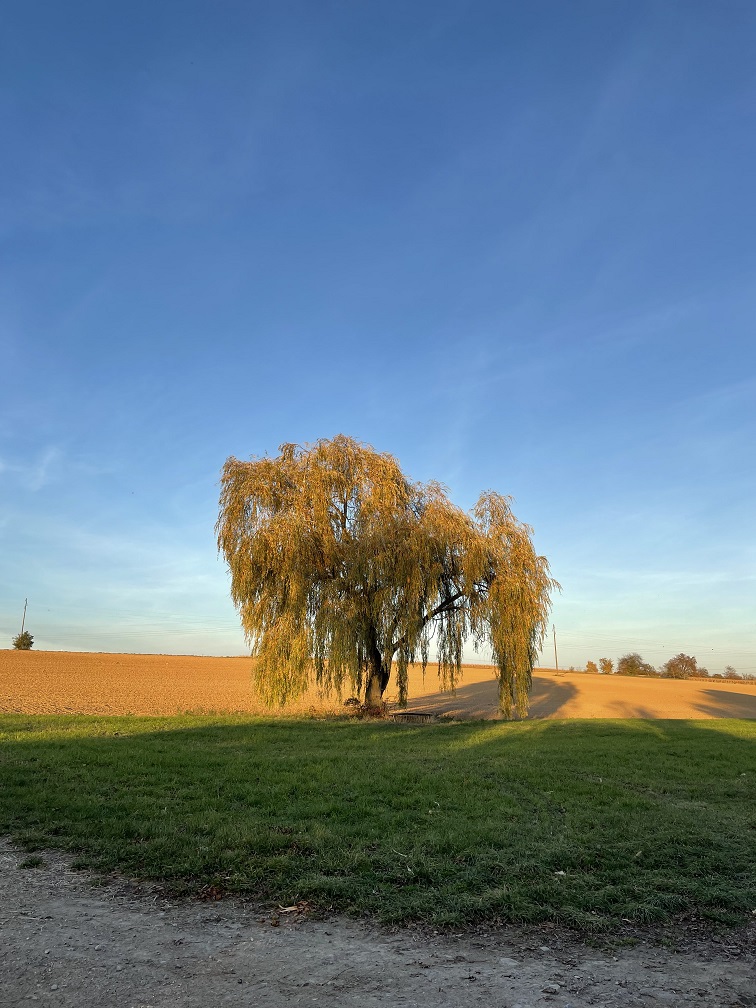The history of the abbey
In 1046, Heilwige de Dabo, Countess of Eguisheim and mother of Pope Leo IX, founded a priory of Canons Regular of Saint Augustine on the hill (Berg) along a stream (Oelen), probably for the repose of the soul of her son Gérard, who had died tragically during a quarrel with the Count of Ribeaupierre.
In 1049, Pope St. Leo IX himself consecrated the chapel that today bears his name, the Chapel of St. Leo IX.
In 1626, the abbey passed to the Jesuit college of Freiburg in Breisgau, then to the university of the same city in 1774.
During the Revolution, the abbey buildings were confiscated and sold to an industrialist from Mulhouse.
Sold again in 1821 to a priest, the former monastery became a boarding school for young girls.
In 1825 it was returned to the hands of a large group of Cistercian monks, commonly called “Trappists”, who had returned from exile. They came from Darfeld, Westphalia, where they had found temporary refuge after many wanderings. A community of Trappist nuns joined them and remained there until 1895, when they moved to Ergersheim, not far from Strasbourg (Abbey of Our Lady of Altbronn); from there they moved much later to Bernardvillé (since 2009: Abbey of Our Lady of Baumgarten).
The monks put the agricultural estate into operation. They experienced difficult times: famine in 1846, fires, epidemics. However, the monastery became increasingly prosperous. Intense activity reigned there. In addition to the farm and the mill, there was a brewery, a cheese factory, a bakery, a printing house; almost all of them were in operation.
Dom Ephrem Van der Meulen, abbot from 1850 to 1884, built up a rich library. Œlenberg founded a monastery in Germany, in the diocese of Aachen in 1862: Mariawald, near Heimbach.
At the beginning of the 20th century, the abbey had 200 monks: 80 priests and 120 lay brothers. Œlenberg was then a very famous religious, intellectual and economic centre. The First World War was to destroy all this development: the buildings were bombed and the monks had to disperse. Reconstruction was difficult.
Œlenberg was destroyed for a second time in 1944-45, just as badly as the previous one. The diocese of Strasbourg and its faithful contributed generously to the reconstruction, while monks from Zundert (Netherlands) came to support the much-tried community, which regained life and hope. A new stage began.
Reconstruction of the buildings and the church after the destruction. Resumption and development of activities, marketing of the flour produced at the monks’ mill in Oelenberg.
Construction of a laboratory for making pasta and cakes and a shop selling monastic products.
Expansion of the community and arrival of monastic vocations. Development of agricultural, milling, manufacturing and sales activities; the activities are an integral part of the local employment and economic fabric. The monks’ products are distributed throughout France and in many Alsatian shops.
The Oelenberg monks’ community undertook a major project to preserve and renovate their heritage which lasted several years.
The monks open an online shop to sell all the products in the shop (monastic products and local Alsatian products) throughout France.
2024: After more than 18 months of reflection, the community, having become very fragile, decided to leave the monastery and go to live in other abbeys and to offer their help to other communities of the Trappist order. The lay employees take care of the upkeep of the site and the heritage, and manage SAS Abbaye d’Oelenberg, while remaining at the service of the monastic ecosystem. The Trappist Order supports the study into the conversion of the heritage, which remains Christian.
2025: The new “Service Monastique” business logo is launched. The priority is to develop the company in the service of abbeys of all Orders.
The Trappist Order Commission works on the reconversion of the heritage represented by Oelenberg Abbey.
From a heritage and artistic point of view
Of the buildings of the past, only a few parts remain: the lower part of the choir of the 12th century chapel, the transept of the former abbey church (1486) and its baroque nave (1755). A 12th century processional cross, a large 14th century crucifix and two beautiful 15th and 18th century statues of Our Lady are also preserved. In the former Jesuit church, the chapels of St. Michael and St. Leo have been built.
The chapel of Saint Michael has Gothic vaults and Romanesque openings. Three keystones are preserved with coats of arms dating from 1486. The chapel of Saint Léon has parts of the 12th century in its chevet. Palmettes capitals can be seen there. One of them represents two heads separated by a cross and designated by the letters S.P.A. and S.P.E. (Saint Paul and Saint Peter).
Another chapel called “of the Mount of Olives” was in the 12th century an isolated building. Later, it was included in the other buildings and served as a cellar until 1895. At that time, it was dismantled stone by stone and rebuilt in the present novitiate in 1921. Its lower parts are Romanesque; the keystones are Gothic. In the Chapter, an 18th century painting, recently restored, is displayed, representing the scene of “the lactation of Saint Bernard”. It comes, along with three other reliquaries from the same period, from the Cistercian Abbey of Lucelle, which disappeared during the Revolution.
Three reliquaries from Œlenberg are also in the parish church of Reiningue. The oldest, a gift from Pope Leo IX, is a silver box, partly gilded. It dates from the 11th century and contains relics of Saint Romain. The second reliquary, known as the Reliquary of St. Roman, is a 12th century work. It also contains relics of St. Roman, St. Lawrence and other saints. Finally, a 14th century reliquary bust of St. Roman contains a relic of the skull of the saint.
An application to extend the protection of the site’s heritage was submitted in 2022.
As a result, all the buildings on the site were listed as historic monuments on 22 July 2024 by prefectoral decree.

